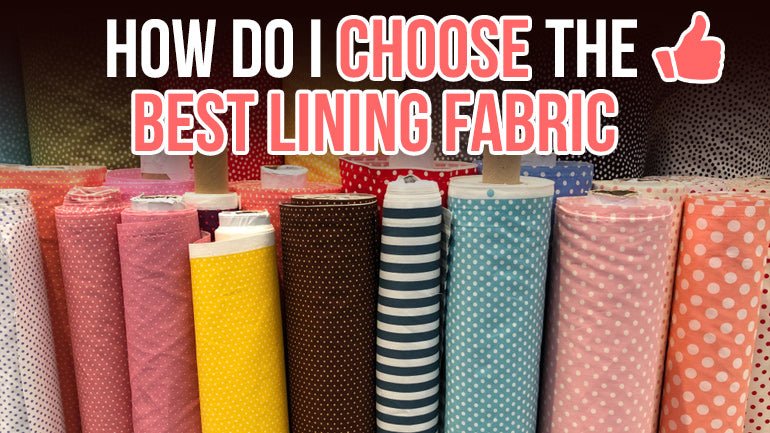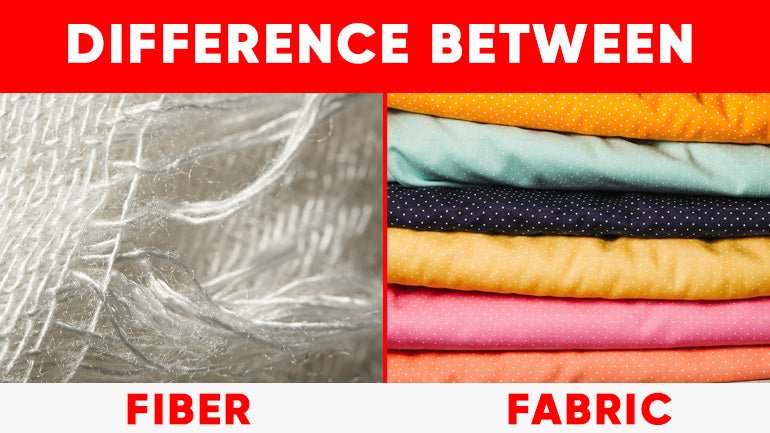Lining fabric, a seemingly unassuming component of our clothing plays a vital role in enhancing the quality and comfort of our attire. It is often overlooked but holds immense importance in the world of fashion.
When it comes to crafting the perfect attire, lining fabric plays a pivotal role in enhancing the overall quality and comfort of the garment. It is not known as an accessory but a crucial element that contributes to the durability, structure, and elegance of your clothes.
From creating opacity and adding warmth to offering a luxurious touch and concealing imperfections, a well-chosen lining fabric can make a world of difference. So, why settle for anything less than the best when it comes to lining fabrics for your beloved wardrobe? In this blog post, we will discuss
Reasons for Using the Best Lining Fabrics for Your Clothes
1. Enhanced Comfort
High-quality lining fabrics ensure that your clothing remains comfortable to wear. It prevents itching or discomfort that may arise from direct contact with the outer fabric. Lining fabrics like silk, cotton, and Bemberg are known for their soft, smooth, and breathable properties, enhancing the overall comfort of your garments.
2. Improved Durability
Durability is a critical aspect of any clothing piece. The right lining fabric can significantly extend the lifespan of your clothing. It provides extra protection to the outer fabric, reducing wear and tear. Durability is especially vital in tailored clothing like blazers, where a stable lining can help maintain the garment's shape over time.
3. Shape Retention
Lining fabrics help maintain the shape and structure of your clothing. They prevent sagging or stretching, ensuring that your garments look as good as new even after repeated wear. This is particularly important in items like suits, dresses, and jackets, where a well-maintained shape is essential.
4. Moisture Management
In outerwear, such as jackets and coats, moisture management is crucial. Lining fabrics can help wick away moisture and keep you dry, making them ideal for outdoor or active wear. Fabrics like Thinsulate are designed for insulation and moisture resistance, making them valuable additions to winter clothing.
5. Opacity
For clothing made from translucent or light-coloured outer fabrics, lining fabrics play a pivotal role in maintaining opacity. Choosing the right lining color that closely matches the outer fabric ensures that your clothing remains discreet and avoids unwanted see-through effects.
6. Tailoring and Fit
Quality lining fabrics enhance the overall fit and tailoring of your garments. They allow for smoother and easier movement, making fitted clothing more comfortable to wear. The stretch and flexibility of certain lining fabrics contribute to a better fit, ensuring that your clothing moves with you.
7. Professional Finish
Finally, using the best lining fabrics elevates the professional finish of your clothing. The quality of your lining is often a reflection of the overall quality and attention to detail of your garment. It's the finishing touch that sets apart a well-constructed piece from a mediocre one.
8. Ensures Easy Layering
For jackets and coats, a well-chosen lining fabric enables these outerwear pieces to effortlessly slide over other layers of clothing, providing a seamless and hassle-free dressing experience.
In the quest to choose the best lining fabric for your clothes, it is imperative to be well-informed about the various types of lining fabrics available and their specific characteristics.
By understanding the differences between natural, artificial, and synthetic fibres, you can make an informed decision that aligns perfectly with the needs of your garments and your personal preferences. Let's explore some of the most popular lining fabrics in detail to help you make an informed and confident choice.
Explore the depths of Fiber vs Fabric.
Choosing the Best Lining Fabrics for your Clothes
When it comes to selecting the ideal lining fabric for your apparel, a diverse range of options is available, each with its unique set of attributes and functionalities.
Understanding the distinctive properties of various lining fabrics can empower you to make the best choice for your clothing projects, ensuring that your creations exude both style and comfort.
Natural Fibers
Silk Lining
Silk is Known for its unparalleled softness and luxurious appeal, and silk lining is a popular choice for a range of clothing items, including delicate textiles such as summer blouses, lingerie, and kimonos.
With its elegant sheen and lightweight texture, silk habotai adds a touch of sophistication to any garment. However, it's important to note that silk lining may require delicate handling and is not suitable for warmer climates.
Cotton Lining
Cotton lining, valued for its softness and breathability, is a versatile option for various clothing projects. This fabric is machine washable and offers a comfortable experience against the skin.
Despite its advantages, it is essential to be mindful of its tendency to wrinkle easily and shrink after washing, making pre-washing a crucial step in the sewing process.
Wool Lining
The wool lining is renowned for its excellent insulation properties, providing warmth and comfort in colder climates. Although it offers breathability and a soft texture, it can be prone to itchiness and requires specialized care, making it more suitable for specific garments designed for cooler seasons.
Artificial Fibers
Cupro Lining
Cupro, also known as "Bemberg," combines the best of both silk and cotton, offering a durable and breathable fabric that mimics the luxurious feel of silk. This all-season material provides comfort and versatility, making it a popular choice for various clothing items, particularly men's jackets, vests, and pants. However, it's essential to handle cupro lining with care, as it is susceptible to staining and may not be as durable as other options.
Acetate Lining
Acetate lining, while less glossy than polyester, is known for its breathable nature, making it a suitable choice for various clothing projects. However, it is crucial to note that acetate lining may be susceptible to wear and tear and can wrinkle easily, necessitating careful handling and maintenance to preserve its quality over time.
Synthetic Fibers
Polyester Lining
Polyester lining, known for its glossy and soft texture, is a common choice for many clothing items due to its affordability and wrinkle-resistant properties. However, it is important to consider that polyester may not offer the same level of breathability as other fabrics, and it can retain odors, potentially causing discomfort during hot weather.
Viscose and Rayon Lining
Viscose and rayon linings, prized for their breathability and soft, silk-like feel, are popular choices for a range of clothing projects. Despite their advantages, these fabrics may require special care during washing to prevent shrinking and maintain their quality over time.
It is crucial to keep in mind that the weight of the lining fabric plays a significant role in determining its suitability for specific garments. For heavier fabrics, selecting a lining that complements their weight and texture is essential to ensure a seamless and comfortable fit.
On the other hand, lightweight garments demand a lining that adds to their overall structure without creating unnecessary bulk.
Key Factors to Consider When Choosing Lining Fabric
Fabric Type
Lining fabrics come in various materials, each with its unique properties. Some common options include silk, satin, cotton, polyester, acetate, and rayon.
The choice depends on the type of garment, personal preferences, and the desired outcome. For example, silk and satin linings add a touch of luxury, while cotton linings are breathable and comfortable.
Weight
Consider the weight of the lining fabric in relation to the outer fabric. A lightweight lining is ideal for delicate, sheer, or lightweight outer fabrics. Heavier linings are suitable for structured or winter garments.
Color
The color of the lining is crucial, especially if the outer fabric is sheer or light in color. A mismatched lining can show through and alter the appearance of the garment. Opt for a lining color that closely matches the outer fabric or complements it.
Texture
Lining fabrics come in various textures, from smooth and slippery to textured or ribbed. The texture can affect how the clothing feels on your skin and how it interacts with the outer fabric. Choose a texture that enhances the comfort and functionality of the garment.
Breathability
Consider the breathability of the lining fabric, especially for clothing that will be worn in warm weather. Breathable linings like cotton allow air circulation, reducing the risk of discomfort due to heat and perspiration.
Moisture-Wicking Properties
If you're selecting lining fabric for activewear or undergarments, prioritize materials with moisture-wicking properties. These fabrics pull sweat away from the skin, keeping you dry during physical activities.
Cost
Lining fabrics come in a range of price points. While quality is essential, consider your budget when choosing the best lining fabric. Keep in mind that an investment in high-quality lining can extend the life of your garments.
Final Verdict
We hope this article will help you to choose the lining fabric that plays a significant role in the comfort, appearance, and longevity of your clothing.
When exploring the world of lining fabrics, it is worth considering the role of printed lining fabrics, which can add a playful and vibrant touch to your clothing creations, enhancing their visual appeal and elevating your overall style statement.



